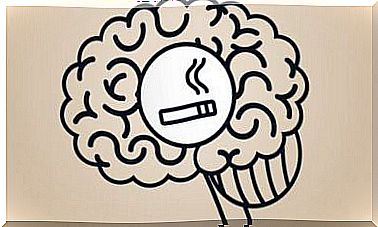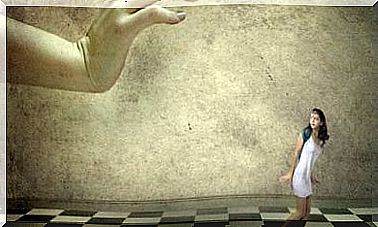Susto: When The Mind Leaves The Body

If we ask someone what susto is, chances are they’ll say it’s a startle response. It’s like going into shock. When something scares us, it can cause a shock. Then we jump out of fear. We are talking about a sensation that arises from the perception of a threat.
If we consult Wikipedia, we will find the following definition. Susto or “the startle response is the largely unconscious defensive response to sudden or threatening stimuli such as an unexpected sound or violent movement, and is associated with a negative effect.”
In the case of humans, this response involves a bodily movement in which the person moves away from the stimulus. The arm and leg muscles contract and the person blinks.
However, it is not this form of susto that we will talk about in this article. There are disorders or cultural concepts of unease that are typical of certain cultures or societies. This is the kind of susto we refer to here.
Susto , a cultural concept that reflects unease
Some syndromes are culture-bound. They refer to “patterns of deviant behavior and distressing experiences that are recurring and specific to a particular place.”
The natives regard some of these patterns as diseases or causes of suffering. They know most of those patterns by their local names. So in this case it is known as susto.
These syndromes belong to categories that are limited to specific societies or cultures. In those cultures, people are generally familiar with the disease, but not outside of it. The specific culture provides a coherent meaning to certain types of experiences and perceptions.

Susto is a cultural explanation for the unease and adversity that is so prevalent among Latinos in the United States. It also happens in people from Mexico, Central America and South America. In the Andean region, the natives know susto as espanto.
Latinos in the Caribbean do not consider this notion as some kind of disease. What is susto then? It’s a condition they attribute to a terrifying event that causes the mind to leave the body.
This split occurs as a result of unhappiness and illness and also has to do with difficulties to play a role in society. The symptoms can occur at any time. This can even be days or years after someone has experienced the distressing event. In extreme cases, it can even lead to death.
Susto , a psychological impact
We can define susto as a “psychological impact” of varying intensity resulting from various factors.
Among other things, we find elements of a supernatural nature and those factors that are caused by natural phenomena and personal experiences. They all lead to unexpected events.
As we can see, susto is a way of classifying a condition that has a traditional relationship. The characteristics, symptoms, predisposition and treatment have specific meaning in different geographical areas.
What are the symptoms?
There are no specific symptoms to describe it. However, people who experience a susto usually report the following symptoms: lack of appetite, poor or interrupted sleep, feelings of sadness, low self-esteem, interpersonal sensitivity, and apathy.
Susto is also accompanied by certain physical symptoms. They can cause discomfort and muscle aches, cold body ends, paleness, headache, abdominal pain and diarrhea. The events that cause this are diverse. Natural phenomena, animals, interpersonal situations, supernatural entities, among others, can be the cause.
Physical illnesses are usually chronic and very different. An intense fear that is often supernatural can cause a “loss of the mind.” This can then cause this disease. In some cases, the people who suffer from susto have not personally experienced any traumatic events.
The influence of susto on others
Patients are affected when others (usually family members) have been affected by susto . There may also be other symptoms: agitation, anorexia, insomnia, fever, diarrhea, confusion or apathy.
Several studies attribute some cases to hypoglycemia and to unspecified biological diseases. According to experts, it is also linked to general anxiety disorders or stress resulting from social conflict or low self-esteem.

Types of susto
So far, three types of susto have been described (in the local Zapotec language it is called cibih ). We can link each form to psychiatric diagnoses in different ways.
Feelings of loss, abandonment, or lack of love from the family members are hallmarks of an interpersonal susto. This form is accompanied by sadness, a negative self-image and suicidal thoughts. This type is very similar to major depressive disorder.
Susto can also be the result of a traumatic event. This event plays a fundamental role in the cause of the symptoms and the emotional processing of the experience. In this case, the diagnosis resembles post-traumatic stress disorder.
On the other hand , there is also the susto with characteristics that includes multiple physical symptoms that recur. For example, the person then looks for professional healthcare from several doctors as a result of what he or she is experiencing. This case resembles a somatization disorder.
Decision
So we can see that susto can be classified in different groups. The treatments also differ. In this we can recognize specific elements. There isn’t really a counterpart to this popular condition.
Yet it is a disorder that is sometimes confused with other diseases. This is a consequence of the complexity in the differential diagnosis. So it can even hide various biological diseases.









